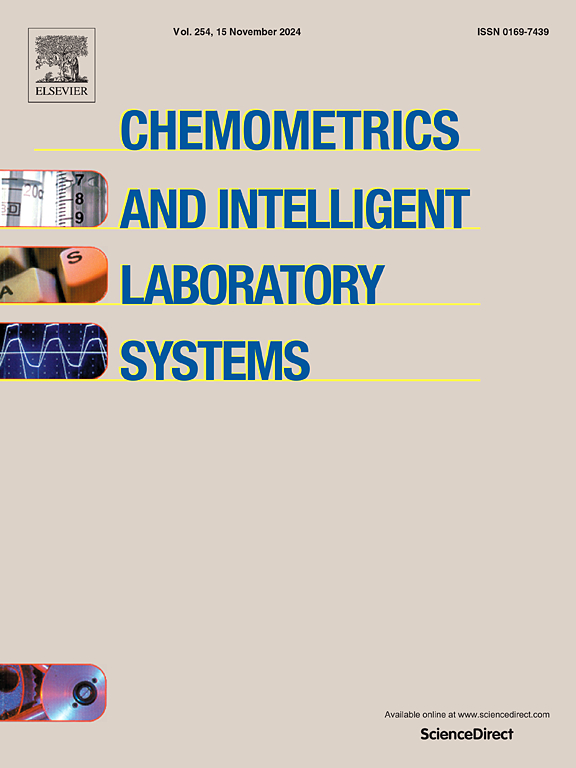smile驱动的机器学习用于防腐材料的高通量研究
IF 3.8
2区 化学
Q2 AUTOMATION & CONTROL SYSTEMS
Chemometrics and Intelligent Laboratory Systems
Pub Date : 2025-05-25
DOI:10.1016/j.chemolab.2025.105441
引用次数: 0
摘要
本研究探讨了基于简化分子输入线输入系统(SMILES)的机器学习(ML)方法作为预测吡啶-喹啉化合物的缓蚀效率(CIE)的唯一输入特征的可行性,以取代各种量子化学性质(QCP)。采用分子访问系统(MACCS)指纹技术简化了分子结构的处理,提高了数据效率。ML算法,特别是梯度增强(GB)模型,显示出优越的预测能力,R2和RMSE值分别为0.92和0.07。该结果类似于采用20个QCP特征的预测,分别产生R2和RMSE值0.90和0.08。该研究证实了SMILES是准确预测CIE的一个强大的单一特征,揭示了SMILES所代表的结构与CIE值之间的适度相关性。这强调了基于smiles的机器学习在评估腐蚀抑制潜力方面的有效性,从而推进了腐蚀科学的预测建模。将机器学习和SMILES符号相结合,为评估不同分子结构的缓蚀能力提供了一种有效的方法。本文章由计算机程序翻译,如有差异,请以英文原文为准。
SMILES-driven machine learning for high-throughput investigation of anti-corrosion materials
This investigation delves into the viability of the simplified molecular input line entry system (SMILES)-based machine learning (ML) approach as the sole input feature for predicting the corrosion inhibition efficiency (CIE) of pyridine-quinoline compounds to replace various quantum chemical properties (QCP). Employing the molecular access system (MACCS) fingerprint techniques simplifies the processing of molecular structures, enhancing data efficiency. The ML algorithm, notably the gradient boosting (GB) model, showcases superior predictive capabilities, as evidenced by R2 and RMSE values of 0.92 and 0.07, respectively. This outcome is akin to predictions employing 20 QCP features, yielding R2 and RMSE values of 0.90 and 0.08, respectively. The study substantiates SMILES as a robust single feature for accurate CIE prediction, revealing a moderate correlation between SMILES-represented structures and CIE values. This underscores the effectiveness of SMILES-based ML in assessing corrosion inhibition potential, thereby advancing predictive modeling in corrosion science. Integrating machine learning and SMILES notation presents an efficient approach for evaluating the corrosion inhibition capacity of diverse molecular structures.
求助全文
通过发布文献求助,成功后即可免费获取论文全文。
去求助
来源期刊
CiteScore
7.50
自引率
7.70%
发文量
169
审稿时长
3.4 months
期刊介绍:
Chemometrics and Intelligent Laboratory Systems publishes original research papers, short communications, reviews, tutorials and Original Software Publications reporting on development of novel statistical, mathematical, or computer techniques in Chemistry and related disciplines.
Chemometrics is the chemical discipline that uses mathematical and statistical methods to design or select optimal procedures and experiments, and to provide maximum chemical information by analysing chemical data.
The journal deals with the following topics:
1) Development of new statistical, mathematical and chemometrical methods for Chemistry and related fields (Environmental Chemistry, Biochemistry, Toxicology, System Biology, -Omics, etc.)
2) Novel applications of chemometrics to all branches of Chemistry and related fields (typical domains of interest are: process data analysis, experimental design, data mining, signal processing, supervised modelling, decision making, robust statistics, mixture analysis, multivariate calibration etc.) Routine applications of established chemometrical techniques will not be considered.
3) Development of new software that provides novel tools or truly advances the use of chemometrical methods.
4) Well characterized data sets to test performance for the new methods and software.
The journal complies with International Committee of Medical Journal Editors'' Uniform requirements for manuscripts.

 求助内容:
求助内容: 应助结果提醒方式:
应助结果提醒方式:


